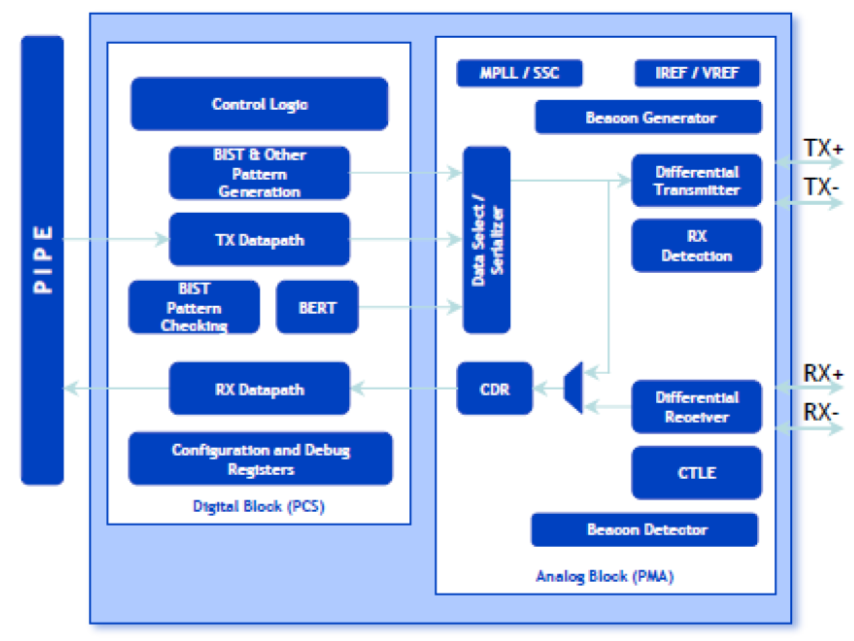Description
The PCIe2.0 PHY IP is an all-in-one physical layer (PHY) IP solution for mobile and consumer applications. The PHY IP includes mixed-signal circuits to handle both 2.5GT/s and 5.0GT/s data transfer speeds while adhering to the PCIe2.0 basic standards. The PCIe2.0 PHY IP is made up of two layers: the Physical Media Attachment (PMA) layer and the Physical Coding Sublayer (PCS), and it simply links to either the PCIe2.0 MAC layer via the standard PIPE-3.0 interface.
The PCIe2.0 PHY IP transceiver is optimized for low power consumption and minimal die area, without sacrificing performance and high-data throughput. The PCIe2.0 PHY IP comprises a complete on-chip physical transceiver solution with Electrostatic Discharge (ESD) protection, built-in self-test module with embedded jitter injection, and a dynamic equalization circuit that ensures full support for highperformance designs.

Features
-
Compatible with PCIe base Specification
-
Full compatible with PIPE4.2 interface specification
-
Independent channel power down control
-
Implemented Receiver equalization Adaptive-CTLE to compensate insertion loss
-
Support 16-bit/32bit parallel interface
-
Support for PCIe gen1(2.5Gbps) and PCIe gen2(5.0Gbps)
-
Support flexible reference clock frequency
-
Support 100MHz differential reference clock input or output (with SSC optionally) in PCIe Mode
-
Support Spread-Spectrum clock (SSC) generation and receiving from -5000ppm to 0ppm
-
Support programmable transmit amplitude and Deemphasis
-
Support TX detect RX function in PCIe Mode
-
Support Beacon signal generation and detection in
-
Production test support is optimized through high coverage at-speed BIST and loopback
-
Integrated on-die termination resistors and IO Pads/Bumps
-
Embedded Primary & Secondary ESD Protection
-
ESD: HBM/MM/CDM/Latch Up 2000V/200V/500V/100mA
-
Silicon Proven in TSMC 22ULP
Deliverables
-
GDSII & layer map
-
Place-Route views (.LEF)
-
Liberty library (.lib)
-
Verilog behaviour model
-
Netlist & SDF timing
-
Layout guidelines, application notes
-
LVS/DRC verification reports
![]()